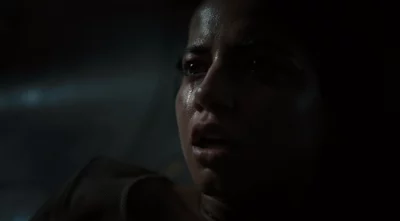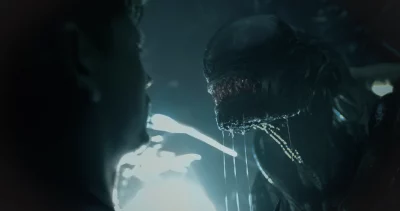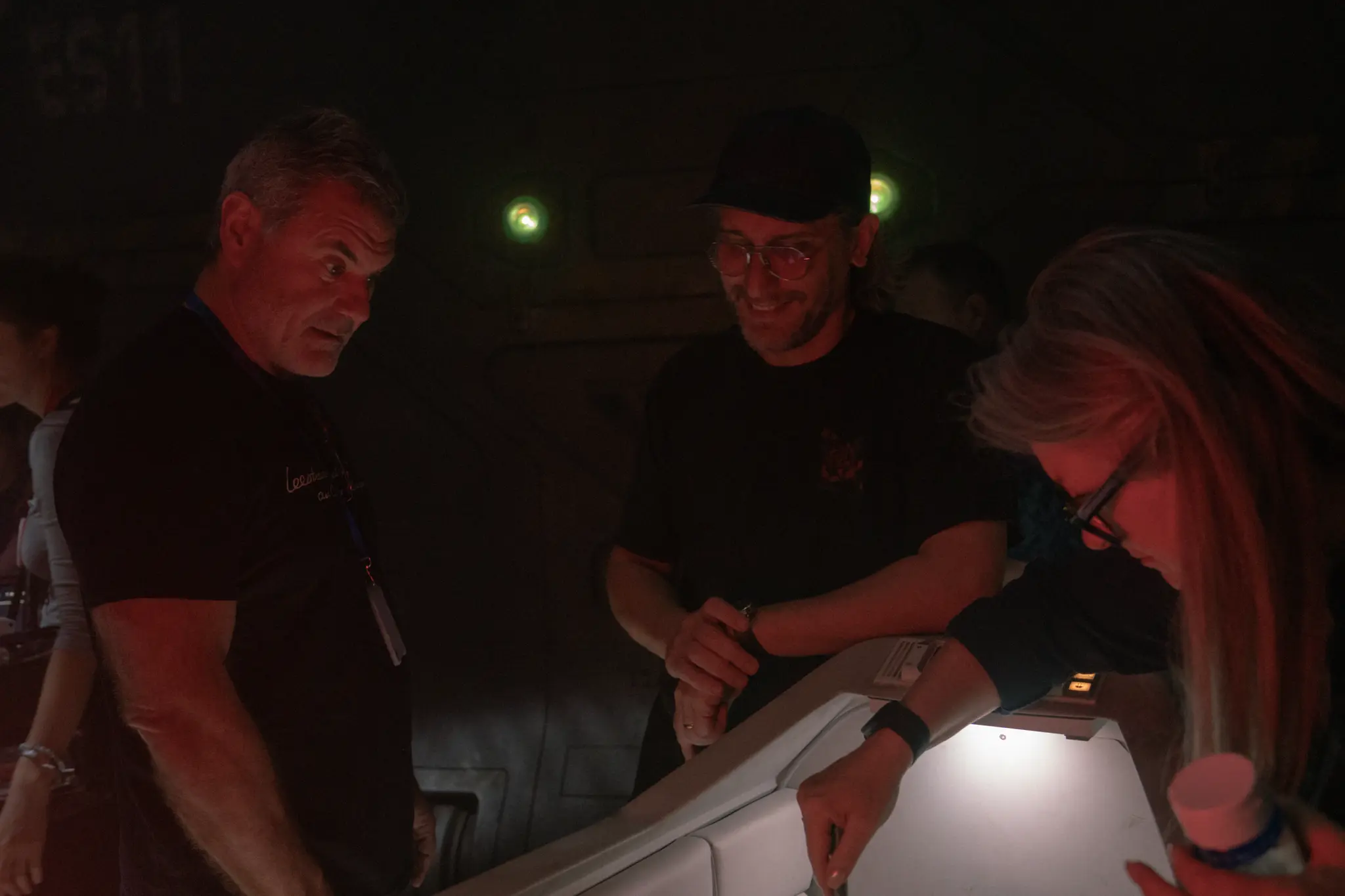The Many Monster Loves of Alec Gillis
Film
As Alien: Romulus—the new installment in the venerated 45 year old franchise that redefined the science doctor and horror genres—arrives in theaters it does so as more than just another movie, but as a piece of an immortal part of cinematic and pop culture history. That’s a distinction that’s shared by Oscar winning make-up and effects artist and monster lover Alec Gillis, who has been part of every film in the series since Aliens in 1986.

“Anybody who saw the original, if you had the good luck to see it in a movie theater, it cannot be overstated how impactful that movie was,” Gillis says of director Ridley Scott’s 1979 classic, which first introduced the frightening creatures known as Xenomorphs. “It automatically became everybody’s favorite monster, and so I’ve had just a lot of fun working within those parameters that those great minds have established.” As a boy growing up, Gillis was introduced to his obsession with movie monsters through his father, who introduced him the works of stop motion effects pioneer Ray Harryhausen. “That’s when I really became aware that the people make monsters for a living,” Gillis says. Gillis got his break in the film industry when he got the chance to interview for a job working for New World Pictures, run by legendary B-movie director Roger Corman, who passed away on May 9, 2024, and who mentored a number of the industry’s top directors, including Martin Scorsese, Ron Howard, Jonathan Demme and Peter Bogdanovich. “What was fantastic about Roger was that he made low budget movies, and that meant that he was giving opportunities to people like myself,” Gillis says. “And Roger was a notorious cheapskate, you know, and I don’t say that the derogatory way, it’s just that those were the parameters you work with. So I learned in that sort of crucible how to get the most bang for the buck and put it on screen.” Gillis unwittingly created his own doorway into the Alien franchise when he brought a friend along with him to the interview at New World – a young aspiring filmmaker named James Cameron. “We met through a high school art teacher that I had,” Gillis says. “And she was like, ‘oh, you guys should meet, you know, you make monsters, he makes movies.’” When Cameron got the opportunity to start making features, he brought a number of artists from New World along with him, including Gillis. “And so I saw the original Alien with Jim in 1979, just as a fan, two fans, and then six years later, I was working on his sequel to it,” Gillis says.
“It automatically became everybody’s favorite monster, and so I’ve had just a lot of fun working within those parameters that those great minds have established.”

It was on Aliens that Gillis began his longstanding relationship with chestbursters, the infant form of the Xenomorph, which gestates inside a human host and the bursts forth from its chest. In Alien: Romulus, Gillis worked closely with director Fede Álvarez to create a new look and feel for how the chestburster would figure into the film. “Rather than go with an explosive, shocking moment, his logic was, ‘the audience knows it’s coming,’” Gillis says. “So it births itself in a much slower way, and it’s more akin to a human birth.” As a puppeteer, Gillis controlled the tiny creature emerging with the chest of the space craft’s pilot, Navarro, portrayed by actress Aileen Wu. “Our work is only as good as the actors who are interacting with it, who are reacting to it,” Gillis says. “And she was in an uncomfortable situation for the entire day of of actual shooting. And she stayed cheerful. And then she would go right into the agonized portrayal of it.” Gillis credits the emphasis that Álvarez put on utilizing practical effects over computer generated whenever possible an integral part of making Romulus stand out as something special in the modern age of filmmaking. “He would give us directions like, ‘Look up at your mama,’” Gillis says. “And we would make it look up, and it was a really nice opportunity to capitalize on one of the things that practical effects gives you, which is that it’s live, and we, as puppeteers are acting with our on screen talent.” In addition to the creature bursting forth from Navarro’s chest, Gillis worked on what is not only one of the most shocking and memorable effects in Romulus, but the entire Alien series (spoiler warning if you have not yet seen the film.) When a facehugger alien attacks a pregnant crew member, Kay (Isabela Merced), it plants a seed, and instead of following the normal gestation process, it morphs with the child already growing inside her, and Kay gives birth to a Xenomoph egg which then hatches. “We did that as well, which was very grizzly,” Gillis says. In designing the sequences, Gillis and the rest of the team went back to the original concepts of H.R. Geiger, the groundbreaking artist who created the original Xenomorph. “Geiger’s whole thing was like a reproductive nightmare, right?” Gillis says. “And it had to do with sexuality and invasive implanting, and it also had to do with birthing. So we wanted to make sure that at this point in the film, we are really putting our human character through the ringer, because these things can’t be pleasant.”
“And so I saw the original Alien with Jim in 1979, just as a fan, two fans, and then six years later, I was working on his sequel to it.”
In a career that has spanned nearly four decades, Gillis’ work has included such astounding effects as the worms in Tremors (1990), the Oscar winning animatronics of Death Becomes Her (1992) and creature design for Godzilla vs. Kong (2021), but after all this time, the Alien series continues to be a defining part of his contribution to making monster movie magic, and with the television series Alien:Earth currently in development, and Alien: Romulus poised for a successful opening weekend at the box office, Gillis has high hopes that he will be revisiting his old friends the Xenomorphs again very soon.
Read more interviews with people in the film industry:
Jean Reno, David Schurmann and My Penguin Friend
Filmmaker Zach Meiners Shares His Story in Conversion
